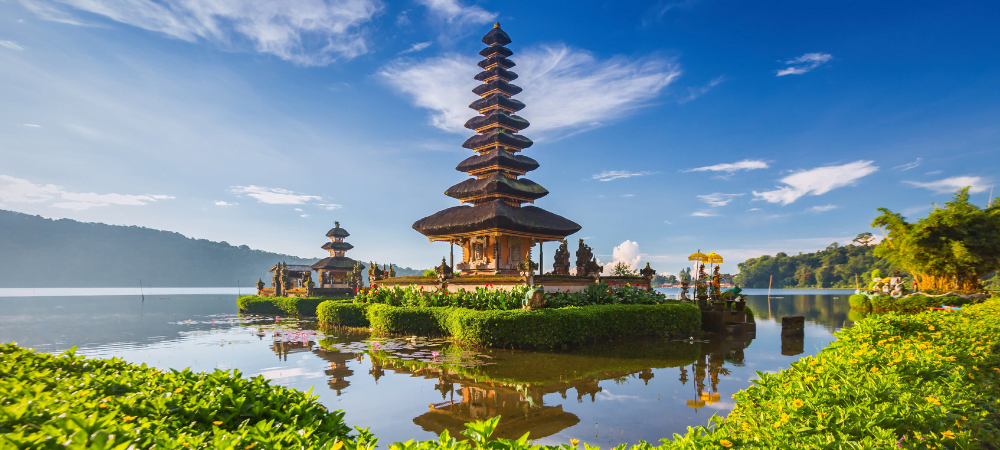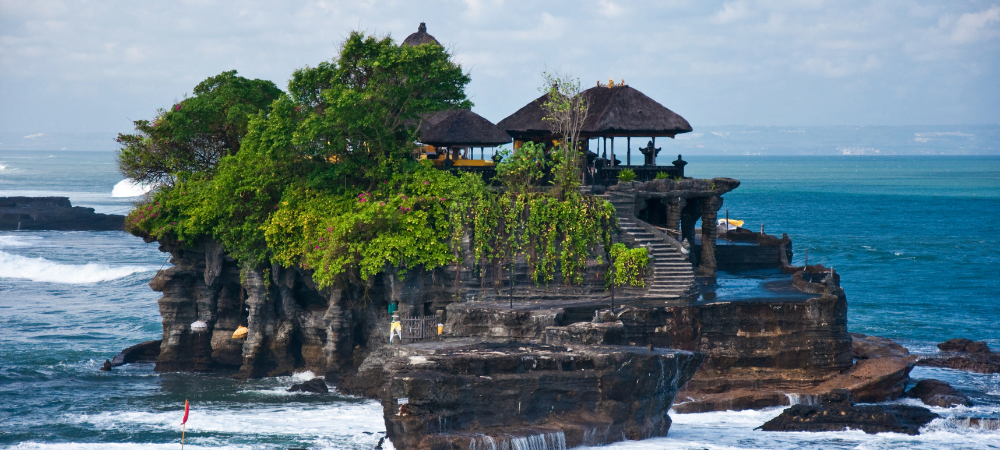Touring the Beautiful Temples Around Seminyak, Bali
Bali is home to a plethora of beautiful temples that are a testament to Indonesia’s artistic and architectural excellence. In this blog post, we will take you on a virtual tour of some of the most beautiful temples around Seminyak and give you a glimpse of the country’s spiritual and cultural heritage.
There are some smaller temples that can be reached afoot from My Villas in Bali, but to visit the main highlights, you will need to take a short ride. So put on your comfortable shoes and get ready to be mesmerised by the beauty of Bali’s temples!
The Most Famous Sea Temple: Pura Tanah Lot
Pura Tanah Lot is one of Bali’s most famous and iconic sea temples and is a must-visit for anyone travelling to the island. Located on a rocky outcrop in the middle of the ocean, just a short drive from Seminyak, this temple is dedicated to the sea gods and is believed to date back to the 16th century.
The temple’s name, Tanah Lot, translates to “land in the sea,” which is a fitting description of its stunning location. Visitors can walk to the temple during low tide, but during high tide, the temple is completely surrounded by water, giving it a surreal and otherworldly appearance.
Pura Tanah Lot is also renowned for its spectacular sunsets, which attract crowds of tourists and locals alike. The temple’s location on the western coast of Bali provides the perfect backdrop for watching the sun slowly sink below the horizon, turning the sky into a kaleidoscope of oranges, pinks, and purples.
The temple complex itself is a maze of courtyards, shrines, and pavilions, all set against the dramatic backdrop of the ocean. Visitors can explore the temple’s various areas, admire the intricate carvings and statues, and even purchase souvenirs and offerings from local vendors.
Pura Tanah Lot is open to visitors every day, but it can get quite crowded during peak tourist season, so it’s best to plan your visit during the early morning or late afternoon. Visitors should also dress respectfully and follow the local customs and traditions when visiting the temple. Overall, a visit to Pura Tanah Lot is an unforgettable experience that showcases the beauty, spirituality, and cultural richness of Bali.
The Highest Cliff Temple: Pura Luhur Uluwatu
Pura Luhur Uluwatu is a stunning temple located on a high cliff overlooking the Indian Ocean on the southernmost tip of Bali. This temple is one of Bali’s most sacred and important sea temples and is believed to date back to the 11th century.
The temple’s location on a high cliff provides breathtaking views of the ocean and the surrounding landscape, and visitors can explore the temple complex and its many shrines and pavilions, all set against the backdrop of the ocean.
One of the most distinctive features of Pura Luhur Uluwatu is its Kecak dance performance, which takes place at sunset every day. This traditional Balinese dance is performed by a group of men in a trance-like state, chanting “chak-a-chak-a-chak” in unison while telling the story of the Ramayana, an ancient Hindu epic.
Visitors to the temple should also keep an eye out for the mischievous monkeys that inhabit the temple grounds. These macaques are considered sacred by the locals, but they can be quite bold and will try to steal food or shiny objects from unsuspecting visitors.
Pura Luhur Uluwatu is open to visitors every day, but visitors should dress respectfully and follow the local customs and traditions when visiting the temple. It’s also important to be aware of the steep cliffs surrounding the temple and to stay on the designated paths to avoid accidents.
Overall, a visit to Pura Luhur Uluwatu is a must-do for anyone interested in Bali’s rich cultural heritage, spirituality, and stunning natural beauty.
A Buddhist Highlight: Satya Dharma Vihara
Satya Dharma Vihara is a Buddhist temple located in the Benoa harbour area in Bali, just a few kilometres from Seminyak. It is dedicated to the Three Teachings of the Chinese folk religion, also known as Tridharma. The temple was erected with donations from people in Indonesia, Japan, Thailand and Taiwan over a six-year period.
The temple is dedicated to Tian Shang Sheng Mu, the Goddess and Protector of the Seas. Inside the stunning red building are shrines to Kuan Di, the god of war, and Kuan Yin, the goddess of mercy.
The temple’s architecture is a blend of traditional Balinese and Chinese styles, and visitors can admire the beautiful carvings, paintings, and sculptures that adorn the temple’s walls and pavilions.
The workers at Satya Dharma Vihara are known for being extremely helpful in guiding visitors with the prayers of the various deities in the temple. Visitors can also participate in meditation and chanting sessions, which take place regularly and provide a peaceful and calming atmosphere.
The temple is open to visitors every day, and there is no charge to enter the temple, just a donation box.
FAQ
How should visitors dress when visiting Balinese temples?
Visitors should dress modestly when visiting Balinese temples to respect the local culture. This typically means wearing a sarong (can be rented or purchased at temple entrances) and a sash around the waist. Shoulders should also be covered, so wearing a shirt with sleeves is recommended. Always follow any additional guidelines provided at the temple entrances.
Can visitors take photographs inside the temples?
Yes, visitors can generally take photographs inside Balinese temples, but it’s crucial to be respectful and mindful while doing so. Certain areas within temples may prohibit photography, and these are usually clearly marked. Always avoid disrupting any ongoing ceremonies or prayers, and be sure to adhere to any guidelines or requests made by locals or temple authorities.
What is the significance of the offerings (Canang sari) found around the temples?
“Canang sari” are offerings made by Balinese Hindus to thank the Sang Hyang Widhi Wasa (God) in praise and prayer. These offerings are crafted from palm leaves and typically contain flowers, food items, and incense, each element carrying symbolic meaning. Canang sari are placed around temples, homes, and even on the streets as a daily act of worship, embodying self-sacrifice in the giving of beautiful creations to the divine. Respecting these offerings by not disturbing them is vital for visitors to Bali.
Read our article on local traditions here.
- Welcome Back To My Villas in Bali - November 17, 2021





